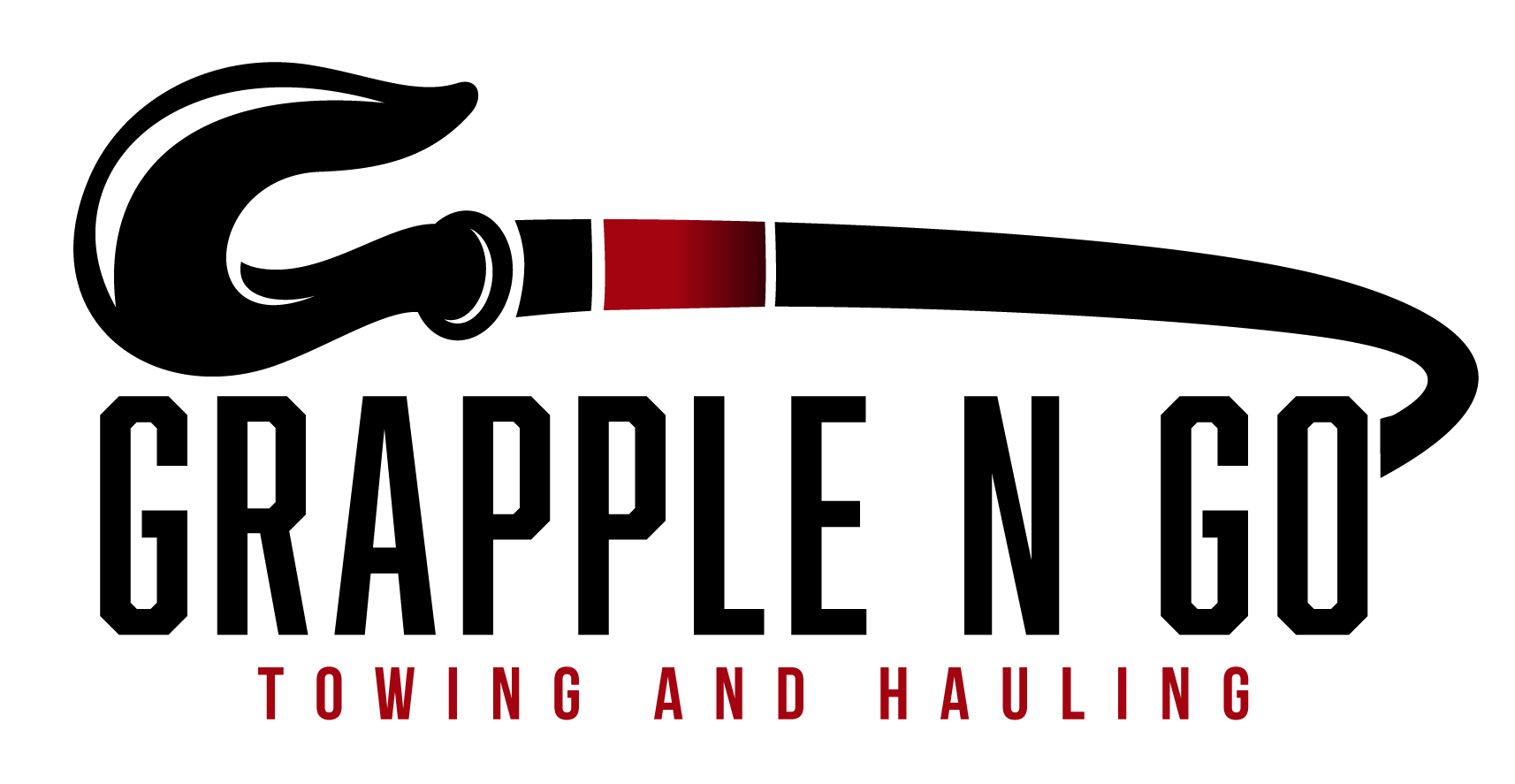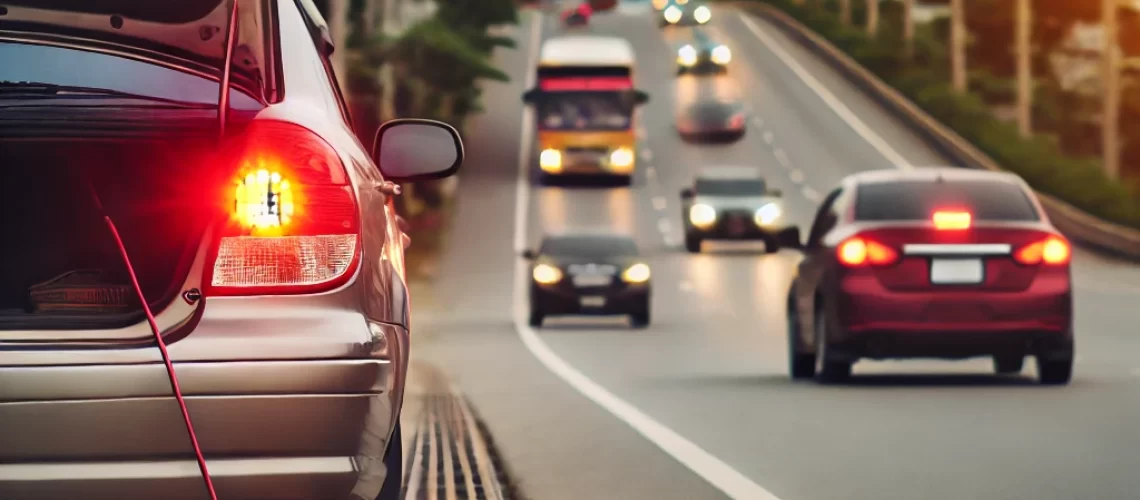Experiencing a car breakdown can be incredibly frustrating, and it can also pose a safety risk if it occurs while you’re on the road. Whether you’re dealing with a mechanical issue or a flat tire, here are some crucial tips to keep you and your passengers safe during a car breakdown.
Turn on Your Hazard/Emergency Lights
The first step when you sense something wrong with your vehicle is to turn on your hazard lights. This action warns other drivers of your car breakdown and keeps them alert to your situation. Keep the hazard lights on until help arrives to ensure maximum visibility, as recommended by the National Motorists Association (NMA).
Slow Down and Pull Off the Road
When experiencing a car breakdown, aim to pull over to the right shoulder of the road. Consumer Reports advises finding a safe, flat location as far away from moving traffic as possible. This reduces the risk of being hit by passing vehicles and allows you to assess the situation safely.
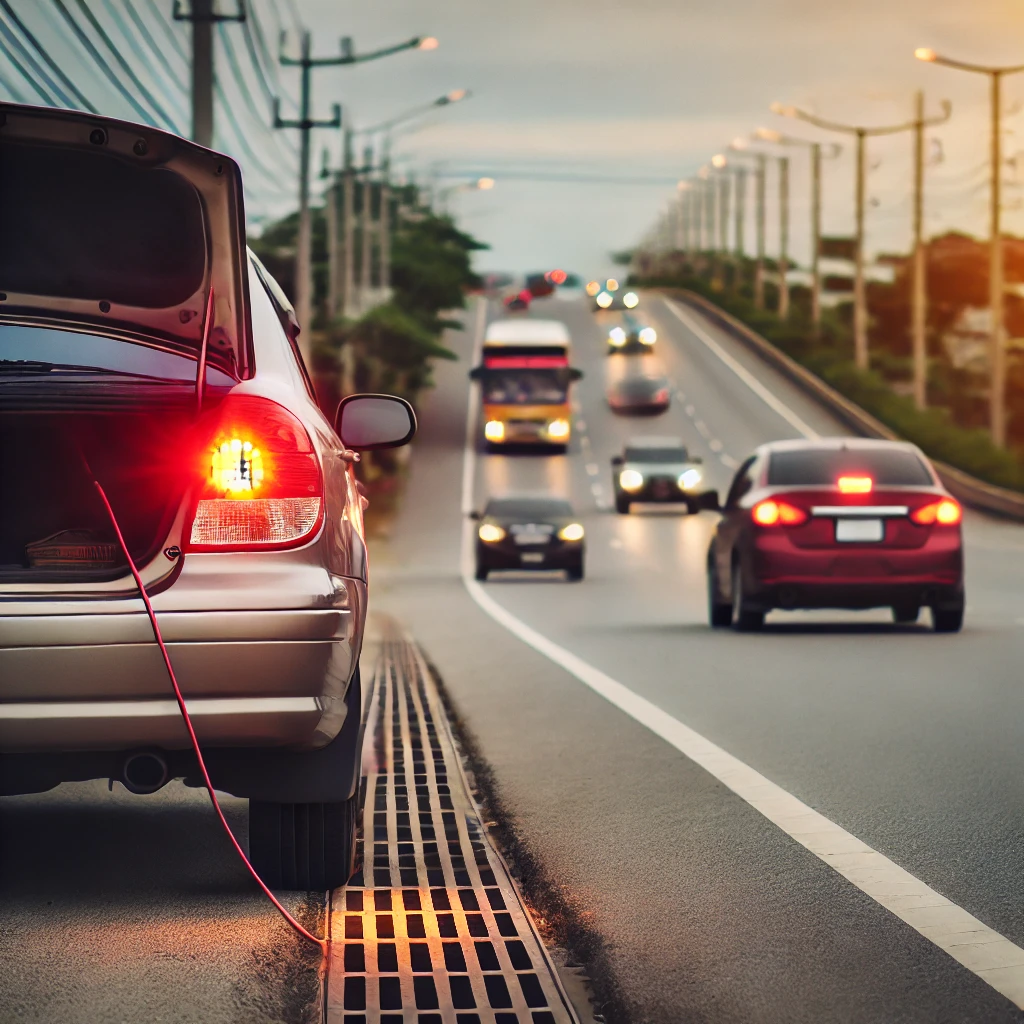
Turn Your Wheels Away from the Road and Engage the Emergency Brake
The California Department of Motor Vehicles (DMV) recommends engaging your emergency brake, also known as the parking brake, during a car breakdown. If you have to park on a hill or slope, turn your car’s wheels away from the road. This precaution helps prevent the car from rolling into traffic, ensuring safety for you and other road users.
Stay in Your Vehicle
On a highway or crowded road, it’s best to stay inside your vehicle during a car breakdown. The Insurance Information Institute (III) advises against getting out to inspect the damage or fix a mechanical problem. If you must exit the car, make sure you’re in a safe place and that the road around you is clear. If you’re stopped on the right-hand side, exit through the passenger-side door to avoid oncoming traffic.
Be Visible to Other Drivers
After ensuring your safety, make your car breakdown visible to other drivers. Propping up your hood signals that your vehicle is in distress, as recommended by the NMA. This alert encourages other drivers to proceed with caution and helps prevent further accidents.
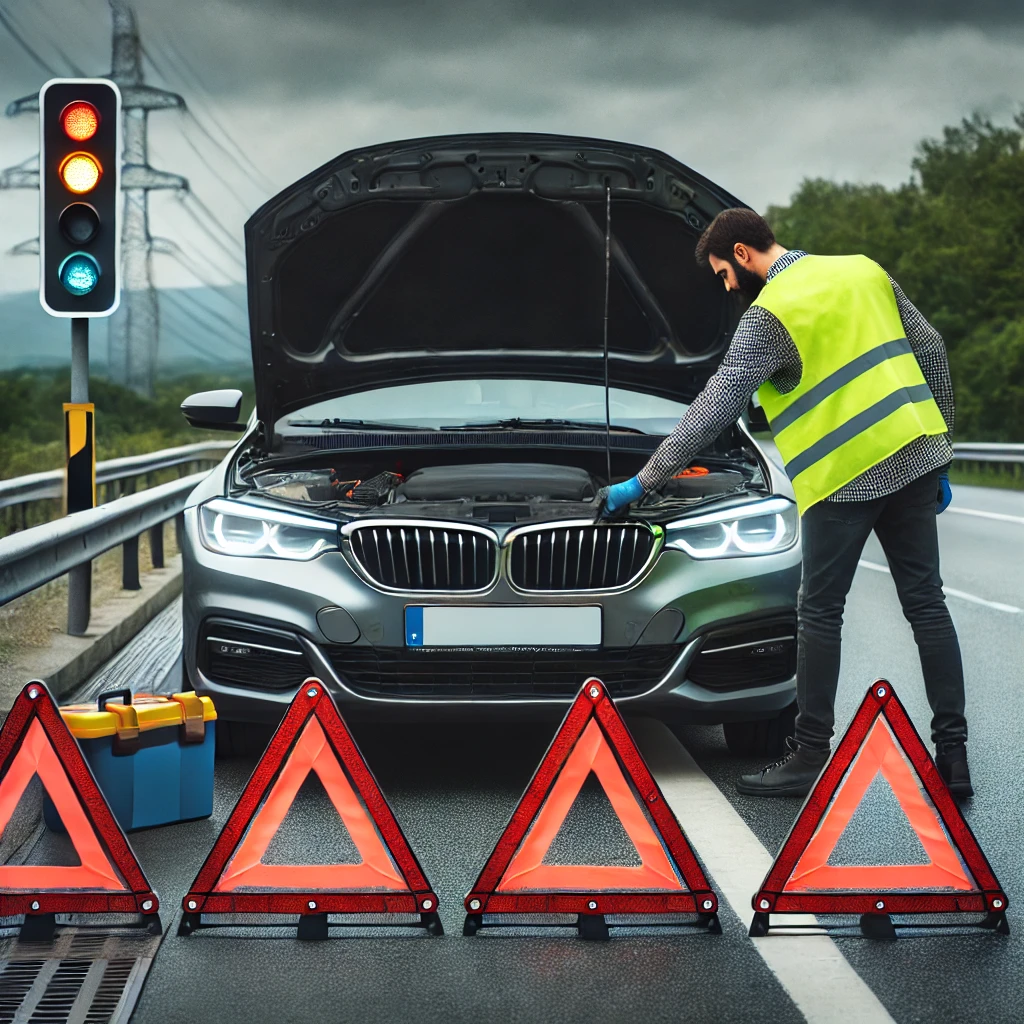
Set Up Flares or Triangles
During a car breakdown, setting up flares or reflective triangles behind your vehicle is crucial. According to the III, these items alert other drivers to your location, enhancing visibility and safety. Place them at a safe distance from your car to give oncoming traffic ample warning.
Call for Help
One of the most important steps during a car breakdown is to call for help. Use an app or call directly to get a tow truck, mechanic, or roadside assistance through your insurance company or another provider. If you’re in an emergency situation or unsure who to contact, call 911 or the local police for assistance.
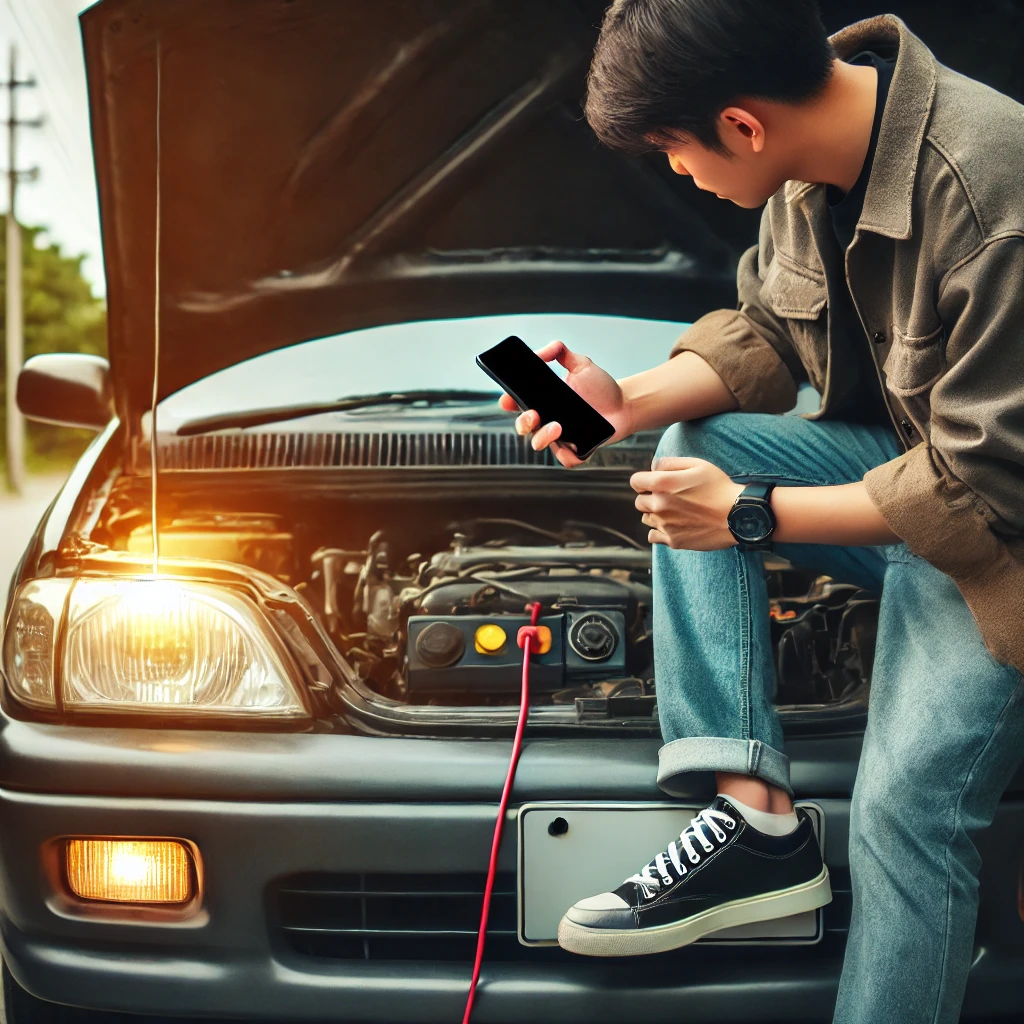
Consider a Roadside Assistance Membership Plan
To be better prepared for a car breakdown, consider investing in a roadside assistance membership plan. This plan can provide peace of mind by ensuring you have help in case of a breakdown or other unexpected car issues. Roadside assistance plans often include services like towing, jump starts, fuel delivery, and lockout services. You can purchase roadside assistance through your car insurance company or from an independent provider.
Staying Prepared for the Unexpected
Preparation is key when it comes to handling a car breakdown. Having a well-stocked emergency kit in your car and knowing the steps to take during a breakdown can make a significant difference. Here’s a checklist of items you should keep in your car to stay prepared:
- A properly inflated spare tire, wheel wrench, and tripod jack
- Jumper cables
- Tool kit and/or a multipurpose utility tool
- Flashlight and extra batteries
- Reflective triangles and brightly colored cloth to make your vehicle more visible
- Compass
- First aid kit with gauze, tape, bandages, antibiotic ointment, aspirin, a blanket, nonlatex gloves, scissors, hydrocortisone, thermometer, tweezers, and instant cold compress
- Nonperishable, high-energy foods such as unsalted nuts, dried fruits, and hard candy
- Drinking water
- Reflective vest in case you need to walk to get help
- Car charger for your cell phone
- Fire extinguisher
- Duct tape
- Rain poncho
- Snow brush
- Shovel
- Windshield washer fluid
- Warm clothing
- Cat litter for traction
- Blankets
Additionally, keep family and emergency phone numbers, including your auto insurance provider and a reliable towing company, saved in your phone for quick access. Having these numbers readily available can save valuable time and reduce stress during a car breakdown. It’s also wise to have a written copy of these contacts stored in your glove compartment in case your phone is not operational.
Conclusion
A car breakdown can be a daunting experience, but knowing what steps to take can greatly enhance your safety and peace of mind. Always turn on your hazard lights, pull off the road to a safe location, and stay in your vehicle if you’re on a busy road. Make your car visible to other drivers, set up flares or triangles, and call for help. Considering a roadside assistance plan can provide additional security and support in case of a car breakdown. By being prepared and knowing what to do, you can handle a car breakdown efficiently and safely, ensuring minimal stress and maximum safety for you and your passengers.
